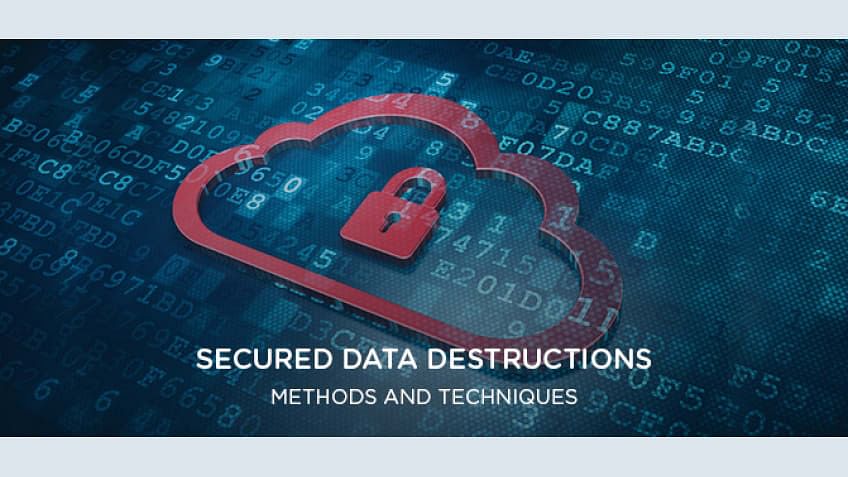Optimizing Cyber Security through Advanced Data Destruction Approaches
Optimizing Cyber Security through Advanced Data Destruction Approaches
Blog Article
The Importance of Effective Data Devastation Practices in Safeguarding Sensitive Details and Ensuring Computer Protection
In an era where data violations are increasingly typical, the value of reliable data destruction methods can not be overstated. Organizations face significant risks when sensitive information is inadequately thrown away, possibly leading to unauthorized gain access to and severe financial effects. Carrying out durable information devastation methods not just minimizes these dangers however also lines up with lawful conformity demands, ensuring that organizations promote their track record and foster customer trust fund. The inquiry continues to be: what certain strategies can be used to boost these practices, and how can organizations properly integrate them into their total cybersecurity structure?
Understanding Information Damage
Recognizing information damage is essential in today's electronic landscape, where delicate info can quickly be jeopardized. Efficient data destruction includes not just making sure however deleting data that data is irretrievable via thorough approaches. This process is necessary for companies that manage personal client info, copyright, or interior files, as any type of breach can result in extreme economic and reputational repercussions.
Information damage encompasses various techniques, consisting of shredding physical media, degaussing magnetic storage space gadgets, and employing software-based options that overwrite information numerous times. Each approach serves a details objective and has to line up with the sensitivity of the details being gotten rid of. Physical devastation is frequently favored for tough drives including highly private information, while software methods might suffice for much less sensitive info.
Additionally, sticking to sector criteria and guidelines, such as the General Data Defense Guideline (GDPR) or the Health Insurance Policy Portability and Responsibility Act (HIPAA), is crucial for compliance and to alleviate lawful risks. Organizations has to develop a durable data devastation plan, train staff members on finest practices, and regularly investigate their treatments to make certain that all sensitive information is dealt with securely and successfully.
Dangers of Inadequate Practices
Poor information damage methods expose companies to considerable risks that can have far-reaching repercussions. When delicate information is not properly thrown away, it remains prone to unapproved accessibility, which can bring about data breaches and identity burglary. Such events not just jeopardize the safety of people yet additionally tarnish the company's credibility, resulting in a loss of client count on and prospective financial consequences.
Moreover, regulatory compliance is significantly strict in lots of markets. Failure to follow information damage policies can result in significant penalties and lawsuits against organizations. These fines can stress financial resources and divert attention from core company operations.
Furthermore, the abuse of residual data can lead to intellectual residential property burglary or business espionage, jeopardizing competitive benefits (data destruction). The impact of poor information destruction prolongs past immediate monetary losses; it can also lead to lasting damages to brand name stability and market position

Organizations should identify that data security is not only about protecting against breaches; it likewise includes the accountable monitoring of data throughout its lifecycle. Disregarding reliable data destruction protocols can have catastrophic implications, highlighting the need for durable procedures to alleviate these threats.
Ideal Practices for Data Devastation
Executing effective information damage methods is essential for safeguarding sensitive information and maintaining compliance with regulative criteria. Organizations needs to This Site take on a multi-faceted approach to ensure that information is irretrievable, therefore avoiding unauthorized accessibility and prospective violations.
First, information must be classified based upon level of sensitivity, allowing organizations to apply proper destruction methods tailored to the level of danger. For electronic data, making use of software-based data-wiping devices that abide with industry standards can effectively overwrite existing data. Physical damage techniques, such as shredding or degaussing, are essential for gadgets that keep sensitive info, making sure complete elimination.
Developing a clear data retention plan is crucial, outlining for how long different sorts of info ought to be retained before devastation. Regular audits of data storage systems are also essential to determine out-of-date or unneeded data needing elimination.
Additionally, training workers on the relevance of data damage and the details protocols to follow fosters a society of safety within the company. Preserving paperwork of data damage refines provides accountability and sustains compliance with internal plans and outside guidelines. By adhering to these ideal techniques, organizations can substantially alleviate the risks connected with information direct exposure.
Legal and Compliance Considerations

Failure to follow these laws can result in extreme fines, consisting of substantial penalties and reputational damage. Organizations has to execute a robust information damage policy that lines up with these legal frameworks and gives clear standards on the correct methods of information disposal, whether physical shredding or electronic cleaning.
Additionally, preserving documentation of information damage tasks is vital for demonstrating conformity during audits or inspections. By prioritizing lawful and compliance considerations, organizations can boost their information security pose and foster trust with stakeholders and customers, inevitably contributing to a more safe and secure information monitoring setting.
Advantages of Effective Data Destruction
Effective information damage techniques extend past mere conformity; they supply significant benefits to organizations that prioritize them. By making sure that delicate information is irretrievably damaged, organizations minimize the threat of information breaches and the potential economic consequences related to them. This aggressive technique not only safeguards against unauthorized accessibility but likewise improves the general reliability of the company in the eyes of stakeholders and customers.
Implementing durable data devastation techniques, such as physical devastation of storage devices or sophisticated information cleaning methods, contributes to the fortifying of a company's cybersecurity posture. data destruction. It minimizes the possibility of intellectual residential property burglary and protects proprietary details, thereby maintaining an affordable side out there

Conclusion
In verdict, efficient information devastation practices are crucial for safeguarding sensitive information and improving total computer safety. Ultimately, a commitment to robust data devastation methods cultivates a culture of duty, consequently reinforcing a company's cybersecurity position and preserving customer trust fund.

Report this page